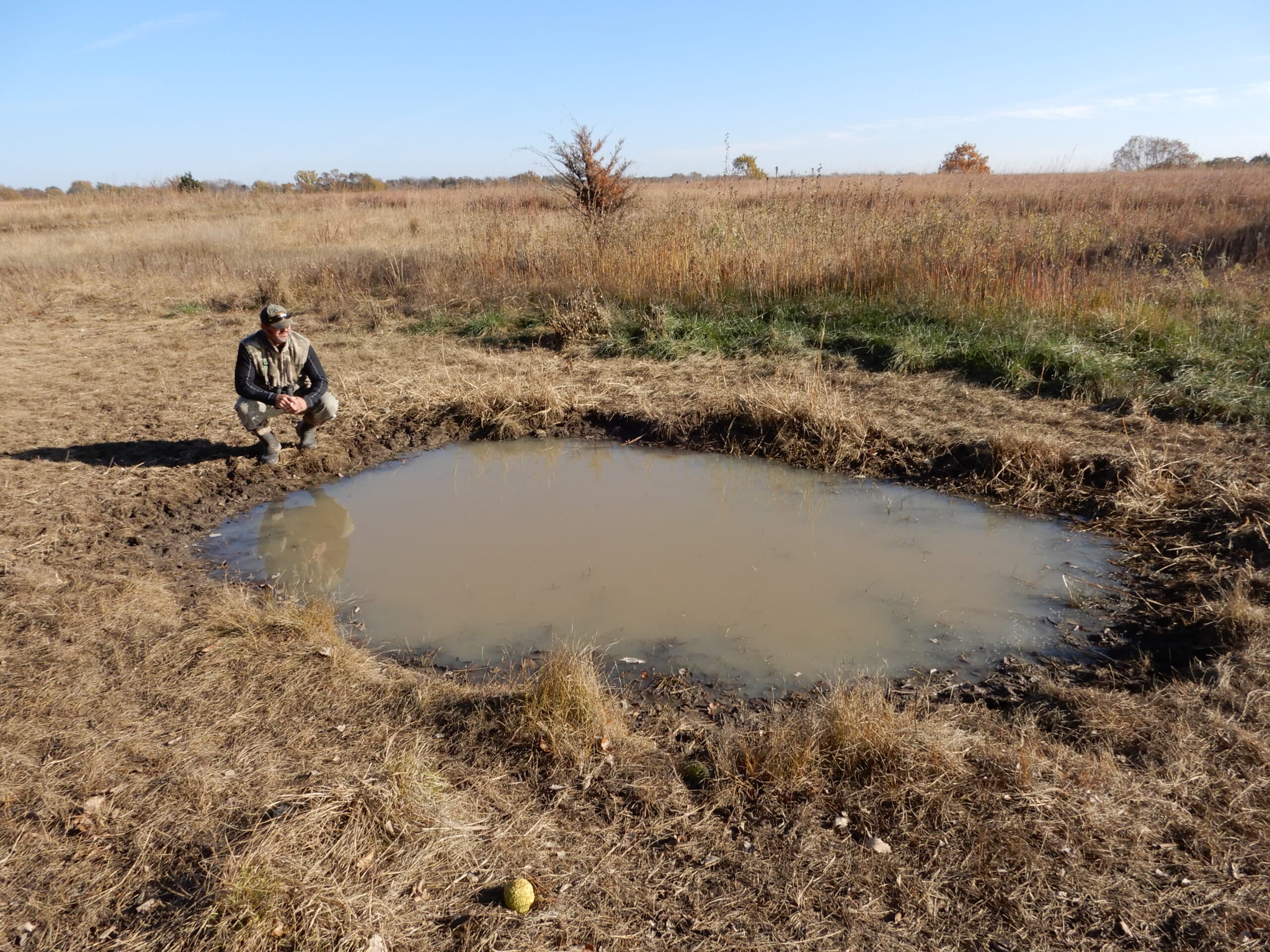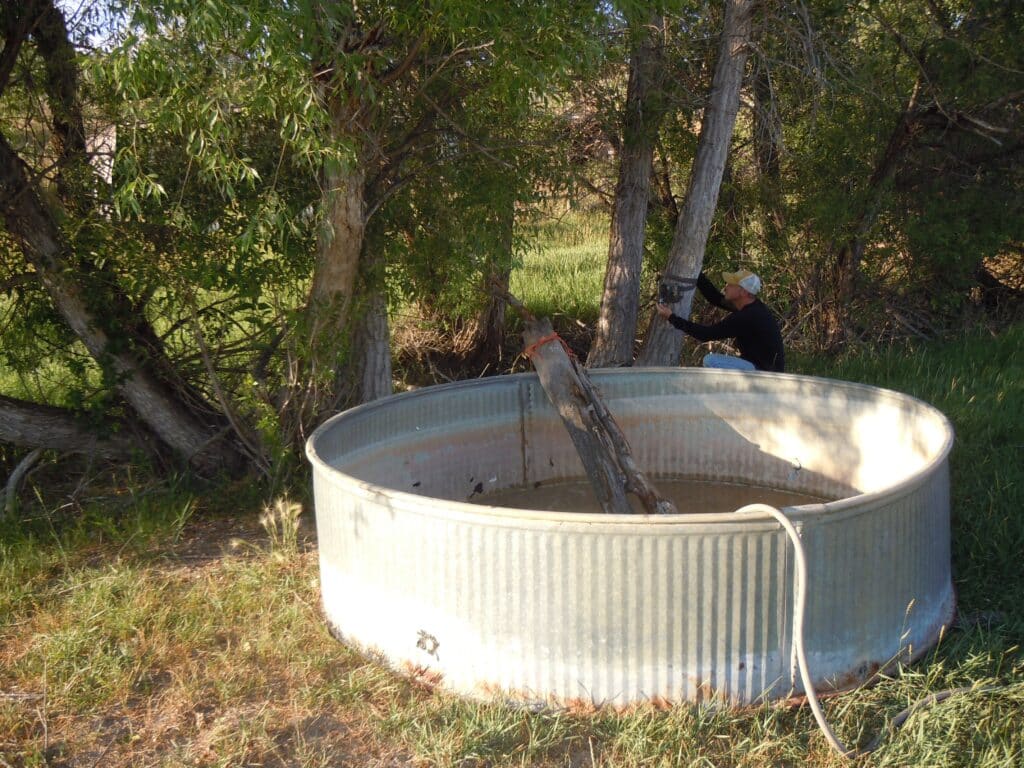Waterholes For Whitetails: Find One Or Build One
Kneeling beside the corn-surrounded reservoir, I took a breath from lugging the cumbersome treestand setup to this isolated stand of timber and looked up for the best tree to hang my stand. The shocking sploosh sound from 30 yards away surprised me. My glance up surprised me even more at the sight of a mature buck now wading up to his belly in the water and sucking it in like a fighter after a long round of punches.
Getting a shot off in his distracted state would have been a slam dunk, but the adolescent buck was not on the hit list. With a bulging belly, he finished his waterhole visit and trotted back into the corn to resume his hunt for an estrus doe.
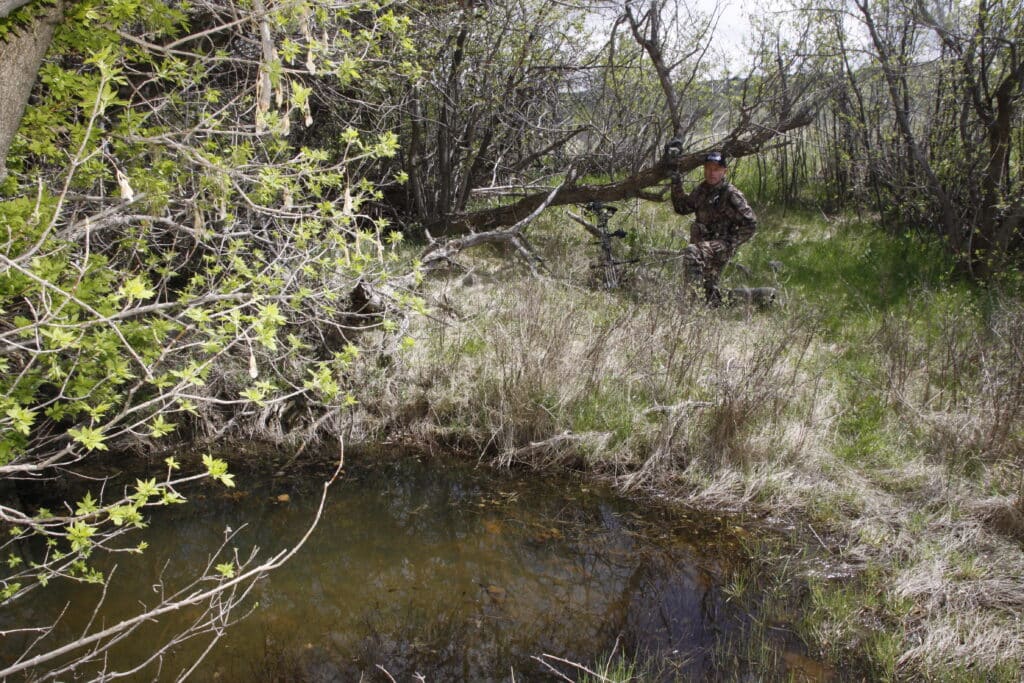 Over my career of deer hunting, I have witnessed enough deer visiting water to know that it is a critical component to the life of deer and possibly your success. Scout water, hunt water and build water if it is lacking on your property.
Over my career of deer hunting, I have witnessed enough deer visiting water to know that it is a critical component to the life of deer and possibly your success. Scout water, hunt water and build water if it is lacking on your property.
That last line is critical. You may have ample water sources already flowing on your hunting property where adding another source may be a waste of time. Deer may already have their preference with sufficient options to keep them hydrated all year long. Regardless, they do need water year-round in some form. Water serves to keep wildlife healthy, at home and as a potential ambush location. A new source in the right place could still be a winning chess move.
BASIC DEER HYDRATION FACTS
Deer require from 4 to 6 quarts of water during hot weather, depending on body weight and the level of their daily activity. During the spring, whitetails may not require as much water due to the high percentage of moisture in their feed. In summer, whitetails require considerable amounts of water due to intense heat and in the fall, they require increased water because of increased physical breeding activity. That was what I experienced. Like any athlete, a rutting buck needs hydration to maintain physical exertion. In winter, normal intakes prevail and whitetails in northern latitudes gather most of their water from snow.
In addition to just needing water, feeding and watering areas also provide a social focal point. You know the old office cliche about workers lingering around the water cooler. Whitetails do the same. One season I spied a bachelor group of bucks slipping from a cornfield to water in an adjacent quarry holding water. After filling up, the group of young bucks did not slink back into the corn. Instead, they hung around, clicking antlers and nosing one another in obvious socializing loitering.
Where do they prefer to water? That varies on every setting, but if they need water during a hot afternoon in the early season, expect them to seek water in heavy cover. If they are exiting cover to feed, they may water almost anywhere. My friend Greg Gilman, a wildlife property realtor from Kansas, has added water sources adjacent to food plots. He understands that deer oftentimes seek water on their way to a food plot and they utilize it while feeding under the cover of darkness.
As far as whether deer prefer flowing, fresh or standing water, that oftentimes again is a character of what is available. From years of observation, even monitoring deer on my own property, they seem to visit water based more on security along with the easiest option. Reservoirs of murky water are not shunned over a flowing spring from what I have seen and what others have shared with me. Water is water to them if they can drink in relative safety.
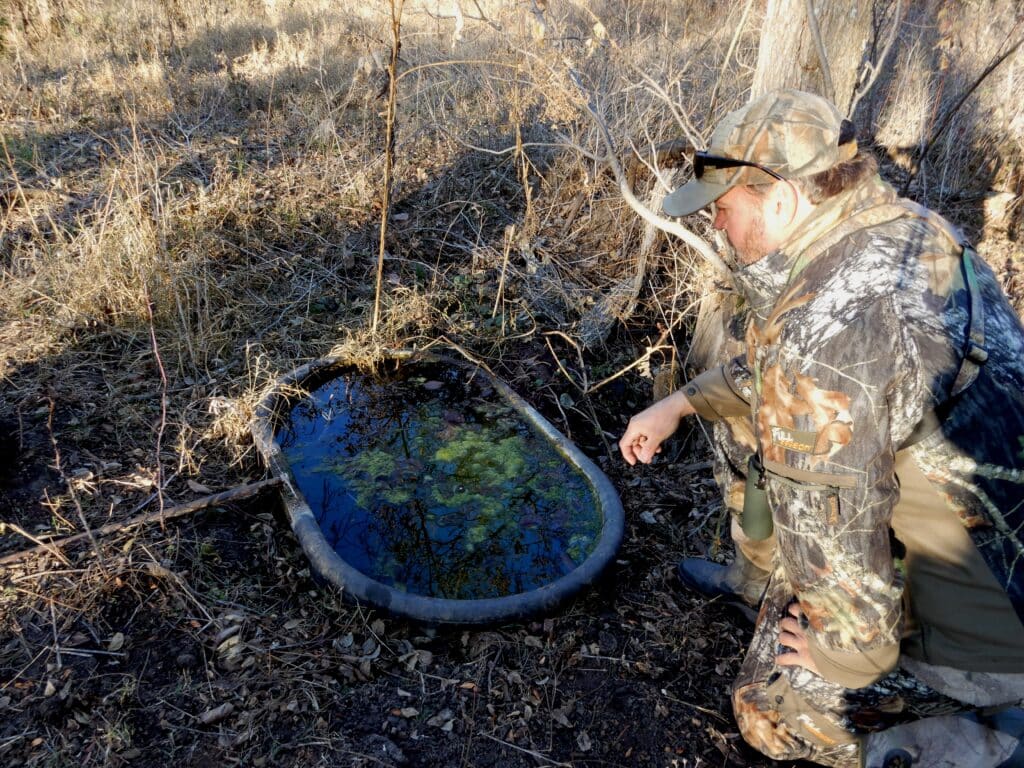
Obviously, your best clues will come from the deer themselves supported by evidence from a team of trail cameras. If you plan to place an ambush at a water source, an onsite, in-depth analysis is warranted. Look for beaten paths to water and associated signs around a water hole. Rubs and scrapes in an area also help pinpoint activity at watering sources like I noted in the opening story. Another way to locate water sources is to establish where bucks bed and feed, and follow a line between the two in search of their water stop. Deer tend to water before arriving at a bedding area and many quickly seek a cool drink after bedding all day.
IF YOU BUILD IT, HE WILL COME
“If you build it, he will come,” is a line from the Kevin Costner classic “Field of Dreams.” It could be your claim if you build a waterhole or accentuate the sources already on your property. I will offer this disclaimer, sometimes even your best efforts may be shunned. You may have overlooked a source or it could take deer months to warm up to a new watering spot in their neighborhood. Nevertheless, what do you have to lose?
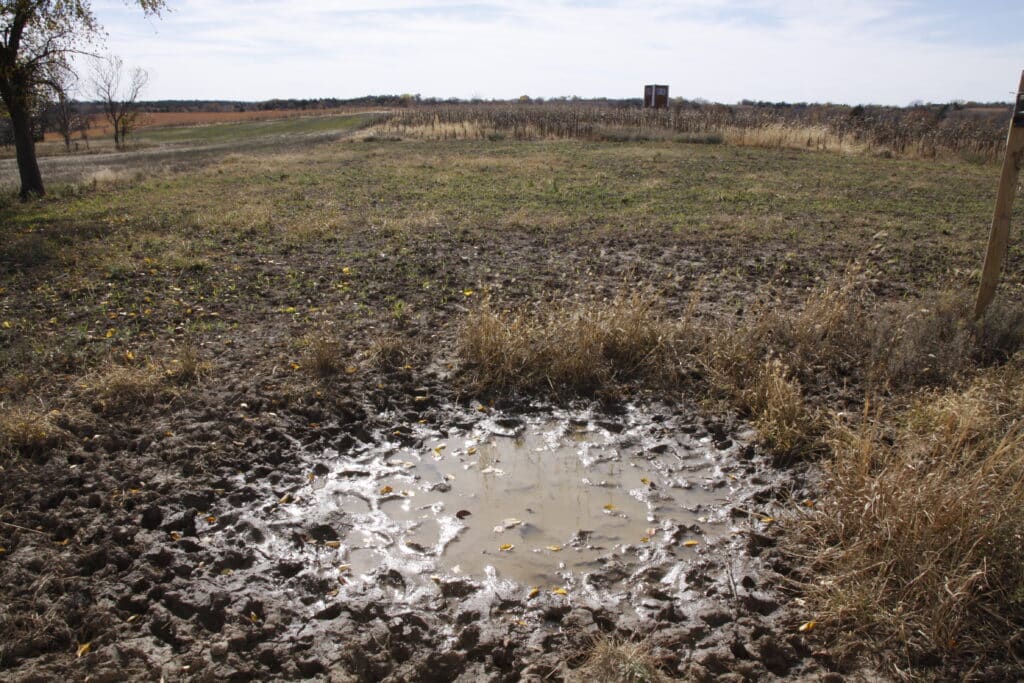
If you do need to construct a water source, there are low-cost alternatives to creating new water, plus, you may be able to modify old water sources for success. You could dump thousands of dollars into a leak-proof reservoir, but there are cheaper water containment systems such as mats or a layer of bentonite. Renting a loader for the weekend may make the project easier. Scrape it out, layer it and pray for rain.
Your property may already have a pipeline, natural seep or even a free-flowing artesian spring. Consider accentuating that source. Whitetails know about such locations so all you need is to make it more accessible and resourceful. If you do not have a source, be the source. You can position a commercial watering tank to be filled by your natural source or even fill it as needed with a portable tank placed in a truck, or UTV.
A galvanized steel or Rubbermaid-quality tank will set you back a bit more than $100, but is ideal for holding water, especially water dripping from a predetermined source. A cheaper model involves a kid-sized swimming pool strategically placed. In either situation, you may wish to bury the receptacle for ease in wildlife use and to ensure it does not blow away. Before attracting any wildlife though, be sure to check state game laws.
If enough good water sources exist near heavy cover, modification to the site is all that may be needed. To make a site more user friendly for you and the deer, begin by mowing a path to the water source, connecting the mowed trail to established trails if possible. If the site has too much brush and prevents easy deer access, and good shooting opportunities, clear brush at the watering spot. If mowing, make sure the mowed trail ends in a shooting lane. Remember that deer, like humans, like to travel on the trails of least resistance, but clearing too much brush may make them insecure. Finally, get the blessing of the landowner before altering any part of the landscape or you will be spending next year locating another hunting spot.
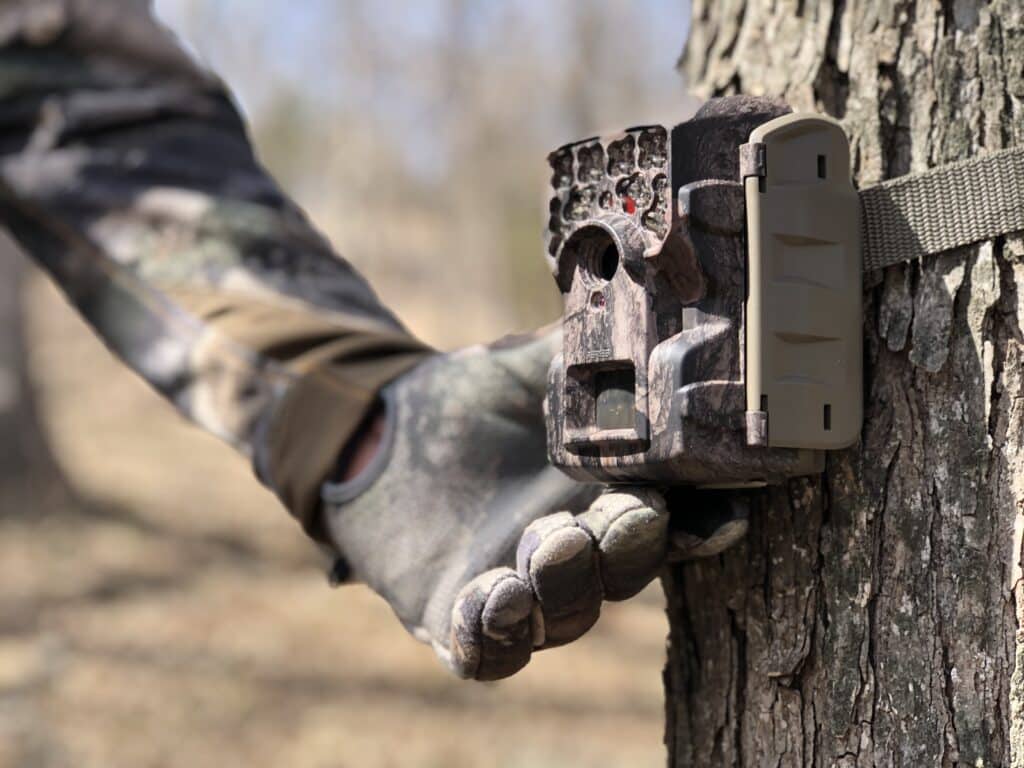
All wildlife need water so any enhancements you add to a property will be used whether you can ambush a deer at it or not. Catching a sly buck at your water source would merely be icing on the cake. Build it. They will come.
About the Author: Mark Kayser is a prolific outdoor writer and hunting television host. Mark spends his falls chasing elk and whitetails from the Rocky Mountains to the Midwest. From solo DIY elk hunts on public land to sitting in a treestand waiting to ambush rutting whitetail bucks, Mark lives and breathes the hunting lifestyle. For more about Mark Kayser and ways to follow him on social media, visit www.markkayser.com.
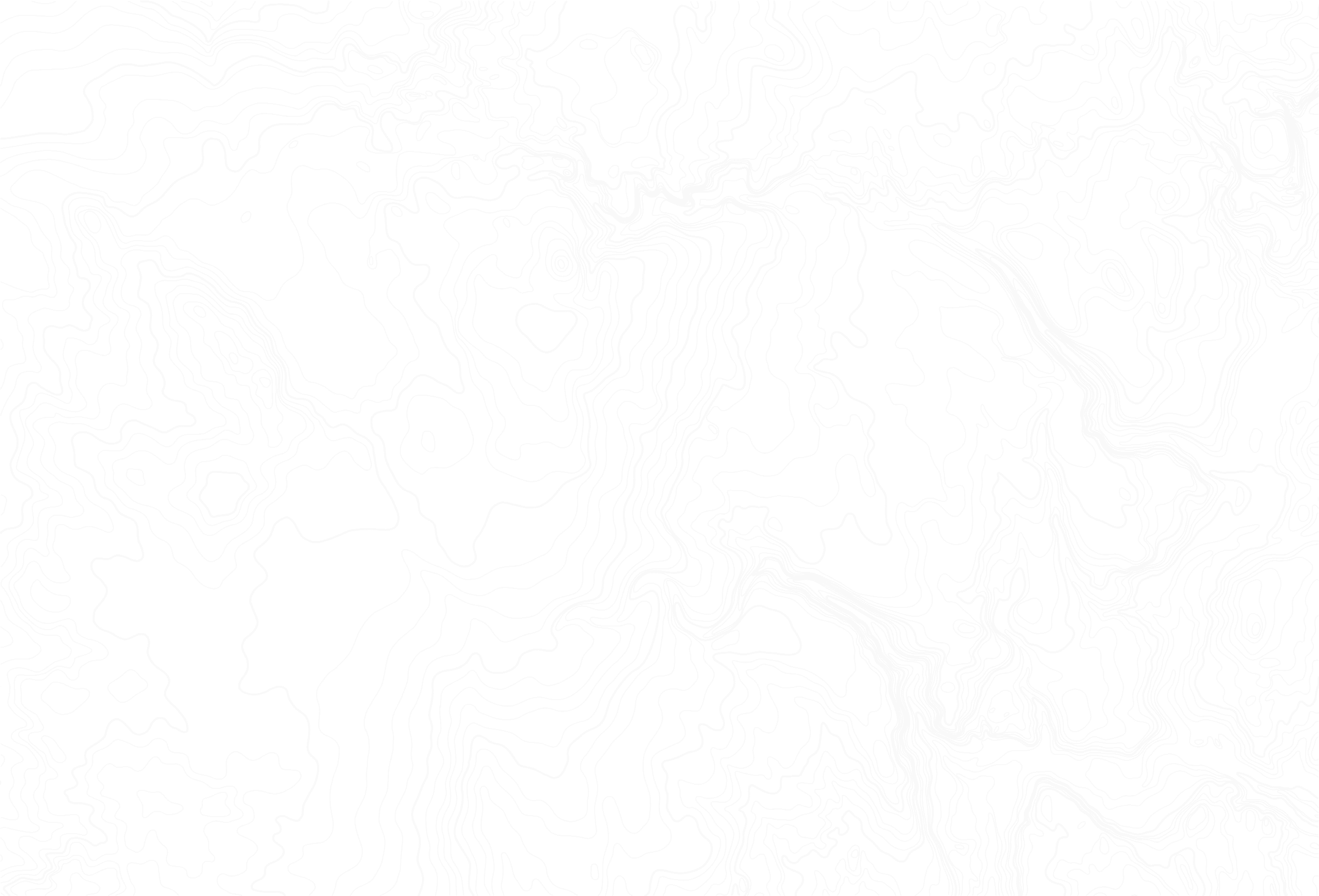

Featured
Juicy homemade jalapeno cheddar brats are perfect for grilling all summer long. They’re packed with all the right seasonings and fresh ingredients, making them extra tasty.

Featured
MeatEater and Moultrie Mobile join teams to bring hunters closer to nature.

Featured
These wild turkey skewers are tender and smothered in a homemade teriyaki glaze. Wild turkey sometimes gets a bad reputation for being a tough meat but when prepared properly using the steps in this recipe, the results are amazing.



